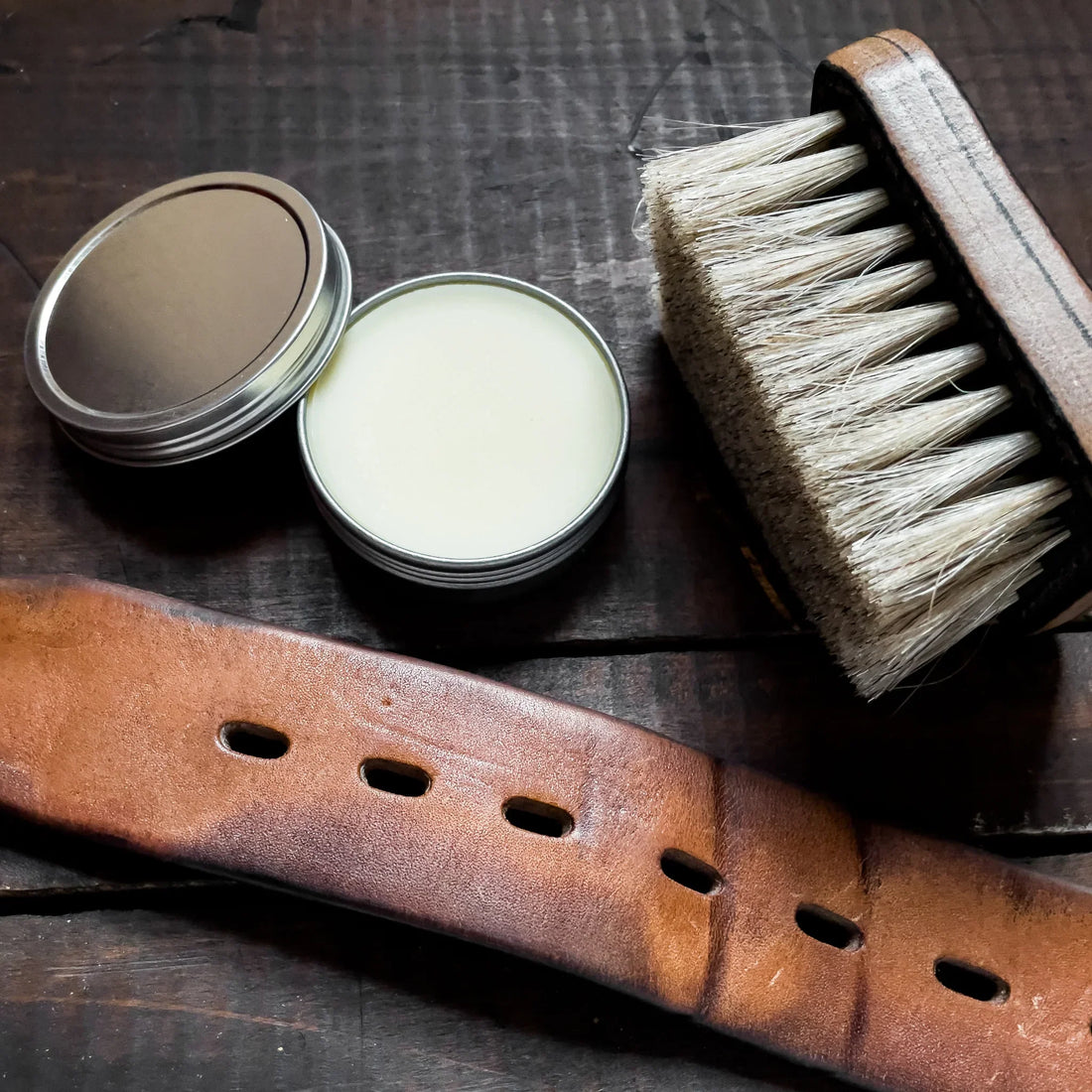
Waxes, creams, or sprays: how to waterproof your leather according to its type
Before you start: “waterproof” vs. “repellent”
In leather, "waterproofing" usually means making it more resistant to water , not making it airtight. Leather is porous: if it gets soaked, it can discolor, warp, or develop mold. The key is prevention and maintenance with proper treatment and sensible use.
Choose the method according to the type of leather
- Full grain/straight hair (aniline, semi-aniline, or pigmented): Waxes and creams work well (barrier and nourishment). Water-repellent sprays can protect, but used excessively, they hinder subsequent nourishment with creams, cause long-term dryness, and aren't my first choice for quality straight hair.
- Nubuck and split leather : here, specific sprays (fluoropolymers) create a grease- repellent layer. Avoid oils/waxes that weigh down or darken the hair unevenly.
- Natural vegetable tanning (veg-tan): Accepts sealing and repellent waxes/creams very well; always test on a hidden area as it may darken . Reinforce seams, openings, and corners (water entry points).
Golden rule: Identify your skin type first and adjust the product to suit your skin.
Application steps (safe flow)
- Clean : Remove dust and grease with a slightly damp cloth. Allow to dry completely.
- Compatibility test : Apply the product to an inconspicuous area to check color and feel.
- Apply in thin, even layers : whether spray, cream or wax, cover the entire surface and pay attention to seams and joints.
- Complete drying : respect the manufacturer's times (sometimes overnight).
- Maintenance : Check the "drip effect." If it stops repelling, reapply. Store in a cool, dry place, away from direct sunlight.
What product to use (shortcut)
- Waxes/pastes (smooth finish / veg-tan): a visible and long-lasting barrier; they can enhance the tone and give a more "sealed" feel.
- Conditioning creams : a balance of nourishment and repellency; ideal for frequently used items.
- Water-repellent sprays : very useful on nubuck/suede and also for thin, even coats; remember to reapply more frequently.
Common mistakes (and how I avoid them in the workshop)
- “Drying” with oils : they darken and can soften excessively; I prefer moderate layers and curing time between coats.
- High-end hairspray without a nourishing plan : It blocks the penetration of creams and dries out the leather from the inside. If you use hairspray on straight hair, alternate it with a nourishing plan.
- Don't seal seams and edges : they're the water highway; always reinforce them.
- Clean with harsh chemicals : they strip away the protective layer. Use mild soaps.
Quick Myths
- “I can make it 100% waterproof” → No. We can greatly increase the repellency, but not completely seal a porous skin.
- “One treatment fits all” → No. Nubuck/suede ≠ smooth : each requires its own approach.
FAQ
How often do I reapply?
When the "waterdrop effect" subsides or after intensive use in the rain. On nubuck/suede, sprays usually require more frequent refills.
Does the treatment change the color?
It can darken , especially on vegetable tanned and light leathers. Test on a hidden area and apply thinly.
Does it work for backpacks, purses and shoes alike?
Yes, adjusting the product and technique to the type of leather and use (footwear suffers more from seams and bends; reinforce them).
